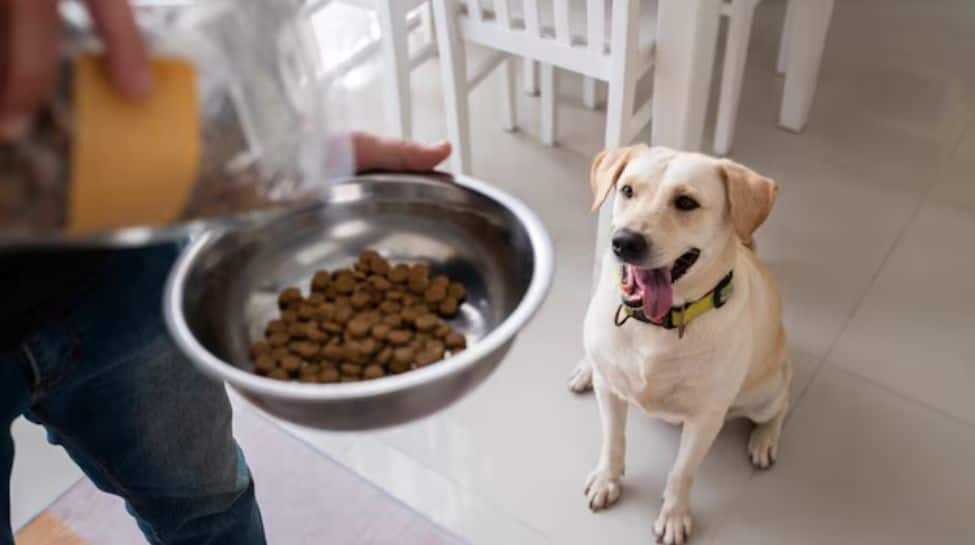Nearly every state in India is now well into the monsoon season, with some experiencing heavy thunderstorms and downpours while a few seeing lighter showers. Although the rains offer much-needed respite from the scorching summer heat, just like us, as seasons change, our pets’ lifestyles must be altered too. This primarily pertains to their diet.
The monsoon can bring with it a host of health concerns for your pets, including digestive issues and stomach infections. So, making appropriate dietary adjustments is crucial to keep your pet hale, hydrated, and healthy during the monsoons. Now, there might be one question sitting at the back of pet parents’ minds - do I give my pet wet food or dry food during the rainy season?
In this article, we delve into the wet food vs. dry food dilemma to help ensure you provide the best possible nutrition for your paw-some friend as shared by Dr Mukul Ranjan Sinha, Scientific Communications Manager, Royal Canin India.
The hydration game
During the monsoon, just like in summer, hydration is equally important. Many pets do not drink enough water, which makes them vulnerable. This is where wet food comes to the rescue. With its higher moisture content (typically 70-85%), wet food can be a real lifesaver in keeping your pet hydrated. It's like sneaking water into their diet without them even realising it!
On the flip side, dry food contains only about 10% moisture. This means if your pet is on an all-dry diet, they'll need to drink more water to stay hydrated. And let's be honest, convincing your pet to drink more water during the monsoon can be as challenging as getting them to take a bath!
The digestion dilemma
When it comes to digestion, wet food often takes the cake. It's easier on the tummy, making it a great choice for pets with sensitive stomachs or those who are getting on in years. It is easy to digest and gentle on the system.
However, dry food comes with its share of pros. It acts as a natural toothbrush, helping to keep those pearly whites clean as your pet chews. But if your pet has dental issues or finds it hard to chew, dry food might not be their cup of tea (or bowl of kibble, in this case).
A balancing act
Both wet and dry foods can provide a balanced diet for your pet, but there are a few things to keep in mind. Wet food can be a nutritional powerhouse if you choose wisely. Look for labels that say "complete and balanced" – it's like finding the holy grail of pet nutrition!
Although dry food is often more budget-friendly and easier to store, it also needs to be chosen carefully. It's not just about picking any old bag off the shelf. When selecting dry food, consider your pet's age, size, and health needs. The primary aspect to consider when choosing dry food for your pet is that it needs to fit just right!
Is your pet a picky eater?
If your pet is sometimes a food snob, wet food might just be the ticket. Its smell and texture can be more appealing, especially if your pet has been turning their nose up at their usual fare. Some pets love the crunch factor of dry food, so if your pet is one of them, dry food might be the way to go.
Environmental factors
Wet food can be slightly more high maintenance during monsoons. Given the high humidity in the air during monsoon season, wet food can spoil quickly and attract insects faster than dry food. On the other hand, dry food is relatively more low-maintenance. It's less likely to spoil in humid weather and doesn't need to be refrigerated. However, it must be stored in an airtight container to avoid losing the crunchiness and taste, and to prevent mould infestation, which can be more common during monsoons as there is an increase in environmental moisture. As for wet food, ensure you keep it refrigerated soon after opening. Scoop out your pet’s usual feeding portion and allow it to come to room temperature before feeding them.
The verdict
When it comes to your pet’s diet, sometimes, there is no one-size-fits-all concept. The best diet for your pet during the monsoon depends on their individual needs, health conditions, and preferences. But always serve your pet’s food at room temperature, irrespective of whether it’s wet food or dry.
If hydration is a concern or your pet has dental issues, wet food might be the way to go. But if your pet is a champion chewer with no hydration problems, dry food could be a practical choice. But remember, whichever option you choose, your pet needs to gain maximum nutrition from their meals to ensure good health. Even a combination of wet and dry food can work wonders for your pet. However, it’s best to find a reliable, credible brand and stick to that, particularly if you’re mixing the food to avoid any indigestion.
Further, ensure your pet’s food and water bowls are clean before they eat/drink out of it. Look for any changes in their eating habits or health, and don't hesitate to consult your vet if you have concerns. After all, rain or shine, a healthy pet means a happy pet parent!
















